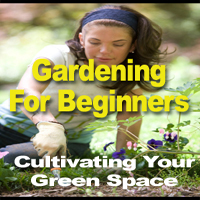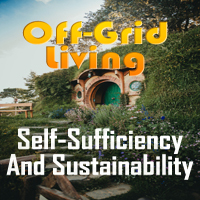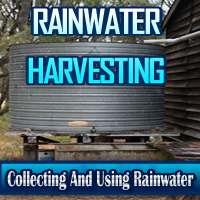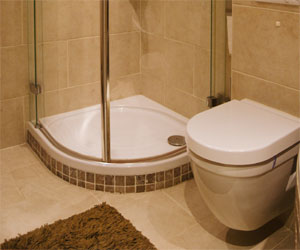


A Clean Home And A Clean Conscience
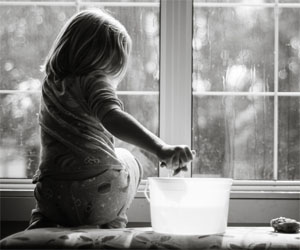
As our society becomes increasingly environmentally conscious, our cleaning habits are evolving too. Green cleaning is a growing trend that not only promotes a cleaner, healthier home but also contributes to a more sustainable planet. In this article, we'll explore what green cleaning is, why it matters, and how to get started.
What Is Green Cleaning?
Green cleaning is a cleaning method that emphasizes the use of environmentally friendly and non-toxic products to maintain a healthy living environment. Unlike traditional cleaning methods that rely on chemical-laden products, green cleaning focuses on natural, safe, and sustainable alternatives. These alternatives can include readily available items like vinegar, baking soda, lemon juice, and essential oils.
Why Green Cleaning Matters
Health Benefits: Green cleaning products do not contain harmful chemicals, artificial fragrances, or volatile organic compounds (VOCs) that can negatively affect indoor air quality. This means cleaner and safer air for you and your family, reducing the risk of respiratory problems, allergies, and skin irritations.
Environmental Impact: Traditional cleaning products can contain hazardous chemicals that, when washed down the drain, enter water systems and harm aquatic life. Green cleaning helps reduce water pollution and the environmental impact of your cleaning routine.
Reducing Plastic Waste: Many green cleaning products come in recyclable or refillable containers, reducing plastic waste and contributing to a healthier planet.
Sustainability: By opting for sustainable cleaning practices, you contribute to a more eco-friendly world and encourage the development of environmentally responsible products.
How To Get Started With Green Cleaning
Assess Your Current Cleaning Products: Start by taking a look at the cleaning products you use. Identify which ones contain harsh chemicals and consider replacing them with greener alternatives.
Make Your Own Cleaning Solutions: Many effective cleaning solutions can be made using simple ingredients found in your pantry. For example, a mixture of vinegar and water can be a powerful all-purpose cleaner.
Read Labels: When purchasing cleaning products, read labels carefully. Look for certifications like "EcoLogo" or "Green Seal" to ensure that the product meets environmental and health standards.
Choose Reusable Cleaning Tools: Opt for reusable cleaning tools like microfiber cloths and mop heads to reduce waste.
Reduce, Reuse, Recycle: Use cleaning products and containers that are recyclable or refillable. This minimizes your environmental footprint.
The Green Cleaning Revolution
Green cleaning is not just a trend; it's a fundamental shift towards responsible and sustainable cleaning practices. It empowers individuals to make informed choices that have a positive impact on their well-being and the environment. It's also a step towards a more mindful and eco-conscious way of living.
Green cleaning is not just about having a clean home; it's about having a clean conscience. By adopting green cleaning practices, you not only make your living space healthier but also contribute to the well-being of the planet. So, next time you reach for a cleaning product, consider making the environmentally responsible choice. Your home and the Earth will thank you.
Embracing Simplicity And Sustainability
 Tiny House Living isn't just about living in small spaces; it's a philosophy that's gaining popularity worldwide. It's a choice to downsize and simplify, allowing individuals and families to lead more intentional lives. The movement is driven by a desire to reduce environmental impact, lower costs, and free up time for what truly matters.
Tiny House Living isn't just about living in small spaces; it's a philosophy that's gaining popularity worldwide. It's a choice to downsize and simplify, allowing individuals and families to lead more intentional lives. The movement is driven by a desire to reduce environmental impact, lower costs, and free up time for what truly matters.
One of the most compelling aspects of the Tiny House Lifestyle is its focus on minimalism. Living in a tiny house necessitates a careful evaluation of one's possessions. This shift towards owning fewer things allows for a clutter-free, stress-free environment. People find themselves no longer burdened by the weight of material possessions but rather liberated to explore other aspects of life.
Maximizing space utilization is at the heart of tiny house design. Every square inch is carefully considered and used efficiently. Multi-functional furniture, built-in storage, and innovative space-saving solutions are key elements of tiny house living. These homes prove that you don't need a massive space to live comfortably; you just need a well-thought-out layout and design.
Reducing the environmental footprint is another driving force behind the Tiny House Lifestyle. Tiny houses are typically built with sustainable materials and are energy-efficient. Their compact size requires fewer resources to construct and maintain.


Nurturing Sustainable And Efficient Agriculture
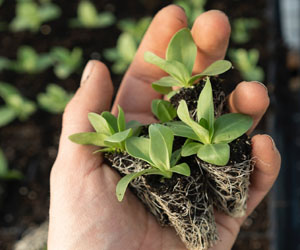 The Principle Of Wicking Systems
The Principle Of Wicking Systems
Wicking systems are a type of passive sub-irrigation method that relies on capillary action to transport water from a reservoir to the root zone of plants. The basic components of a wicking system include a water reservoir, a wicking medium (commonly soil or a soilless mix), and a growing container or bed with a wick that draws water up to the plant's roots.
The key principle behind wicking systems is the movement of water through porous materials, like soil or a specialized wicking fabric, from areas of high water concentration (the reservoir) to areas of lower water concentration (the root zone). This capillary action ensures a consistent and controlled water supply to the plants, making wicking systems highly efficient.
Advantages Of Wicking Systems
Water Efficiency: Wicking systems significantly reduce water wastage by providing moisture directly to the root zone. This targeted irrigation minimizes evaporation and runoff.
Reduced Labor: Once set up, wicking systems require minimal maintenance and are well-suited for urban gardens, container gardening, and raised beds, making them an excellent choice for those with limited time or space.
Improved Plant Health: Consistent moisture levels contribute to healthier and more robust plant growth. These systems help prevent overwatering, which can lead to root rot and other water-related plant diseases.
Drought Resilience: Wicking systems can conserve water and sustain plants during dry spells, making them a valuable tool in regions prone to drought.
Customizable Design: Wicking systems can be adapted to various scales, from small pots to large garden beds and even commercial agriculture, providing flexibility and adaptability to different needs.
Building A Brighter Future Together
 Environmental Sustainability: At the heart of sustainable communities is a commitment to reducing their environmental footprint. This involves adopting eco-friendly construction and infrastructure, implementing energy-efficient technologies, reducing waste, and practicing sustainable land use.
Environmental Sustainability: At the heart of sustainable communities is a commitment to reducing their environmental footprint. This involves adopting eco-friendly construction and infrastructure, implementing energy-efficient technologies, reducing waste, and practicing sustainable land use.
Community Engagement: Sustainable communities prioritize community engagement and participation in decision-making processes. Residents actively contribute to the development and management of their community, fostering a sense of ownership and responsibility.
Social Equity: Social equity is a key component of sustainability. Sustainable communities aim to be inclusive and equitable, promoting equal access to resources, opportunities, and services for all residents, regardless of background or socioeconomic status.
Economic Resilience: Building economic resilience is crucial. Sustainable communities often emphasize local economies, supporting small businesses and initiatives that create jobs and enhance economic stability.
Eco-Friendly Transportation: Sustainable communities prioritize alternative transportation options such as cycling, walking, and public transit to reduce dependence on fossil fuels and lower carbon emissions.
Energy Efficiency: Implementing energy-efficient technologies and renewable energy sources, such as solar panels and wind turbines, helps reduce energy consumption and dependence on non-renewable resources.
Benefits Of Sustainable Communities:
Reduced Environmental Impact: Sustainable communities actively reduce their environmental impact by promoting eco-conscious practices, reducing energy consumption, and minimizing waste.
 Energy Efficiency: Sustainable cleaning practices also involve energy-efficient cleaning appliances. This means reduced energy consumption, which is not only cost-effective but also better for the planet.
Energy Efficiency: Sustainable cleaning practices also involve energy-efficient cleaning appliances. This means reduced energy consumption, which is not only cost-effective but also better for the planet.
Effective Sustainable Cleaning Solutions
Eco-Friendly Cleaning Products: Look for cleaning products with eco-friendly certifications such as the "EcoLogo" or "Green Seal." These products are verified to meet environmental and health standards.
Homemade Cleaning Solutions: You can make your own sustainable cleaning solutions using readily available ingredients like vinegar, baking soda, lemon juice, and essential oils. These natural ingredients are effective for various cleaning tasks and are safe for your family and the environment.
Refillable Containers: Opt for cleaning products that come in refillable containers, reducing the need for single-use plastic bottles that contribute to environmental pollution.
Reusable Cleaning Tools: Invest in reusable cleaning tools such as microfiber cloths and mop heads. These tools effectively capture dirt and dust, reducing the need for disposable cleaning supplies.
Water Conservation: Sustainable cleaning also involves water conservation. Be mindful of the amount of water you use during cleaning, and consider water-saving practices like using a bucket for mopping instead of running water.
The Benefits Of Sustainable Cleaning Solutions
Healthier Indoor Air Quality: Sustainable cleaning solutions do not release harmful volatile organic compounds (VOCs) into the air, leading to cleaner and healthier indoor air. This is particularly important for individuals with respiratory issues or allergies.
The Heart Of Gardening Success
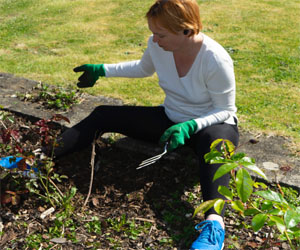 2. Soil Care: Healthy soil is the foundation of strong, vibrant plants. Regularly assess the quality of your garden soil and amend it as needed. Composting, mulching, and using organic matter can improve soil fertility and structure. Understanding your soil's pH and nutrient levels will also help you select plants that are well-suited to your garden's conditions.
2. Soil Care: Healthy soil is the foundation of strong, vibrant plants. Regularly assess the quality of your garden soil and amend it as needed. Composting, mulching, and using organic matter can improve soil fertility and structure. Understanding your soil's pH and nutrient levels will also help you select plants that are well-suited to your garden's conditions.
3. Pruning And Deadheading: Pruning and deadheading are essential maintenance tasks that promote plant health and aesthetic appeal. Pruning involves trimming back overgrown or damaged branches, which encourages new growth and prevents disease. Deadheading is the removal of spent flowers to stimulate further blooms and keep the plant looking tidy.
4. Pest And Disease Management: Keep an eye out for common pests and diseases in your garden. Early detection and appropriate action are essential for preventing infestations. Consider using natural pest control methods to minimize the use of chemicals, which can harm beneficial insects and pollinators.
